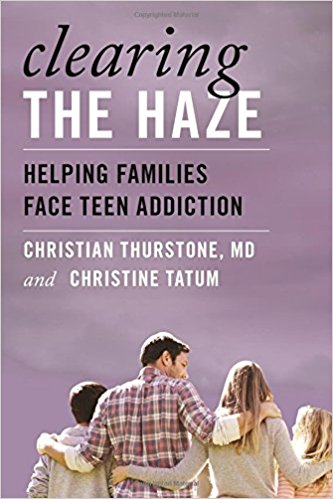Sadly, there’s no dearth of sorry journalism where marijuana is concerned. It’s in the New York Times. It’s in The Denver Post. It’s in alternative weeklies and on TV broadcasts.
This week, it’s also in Time magazine. That’s right. Check out this movie review/commentary filed by writer Tim Padgett.
He deserves some credit for making clear that he doesn’t use marijuana — unlike far too many reporters and editors who both use the drug and substantially shape their news organization’s coverage of it. However, Padgett still manages to fall down on his job miserably, which is a terrible shame because he trumpets his ill-informed perspective from one of the world’s largest and most respected publishing platforms. Check out this passage from his column:
More than half the drug arrests U.S. law enforcement makes each year are marijuana-related – and almost 90% of those are for mere possession, which in lock-em-up states like Florida can get you a year in jail for an amount as small as 20 grams, or less than an ounce. In the end, the country squanders an incredible $8 billion a year busting and incarcerating marijuana users – a figure that climbs to $14 billion when you include the tax revenue to be gained if marijuana sales were legal and regulated. (Little wonder that 300 economists, including three Nobel laureates, called this year for marijuana legalization.)
First, Padgett’s paragraph doesn’t cite sources for the information he cavalierly imparts (Time, snap out of it because you’re not so important and trustworthy that attribution is something you can skip.) — but I digress. Second, these figures are parroted straight from every drug-legalization playbook and sorely lack appropriate context.
I called Kevin Sabet (see kevinsabet.com), a former senior drug policy advisor to three presidential administrations, and asked him to take a look at Padgett’s sweeping claims. I also consulted a public report about marijuana produced by officials of the Rocky Mountain High-Intensity Drug-Trafficking Area. Here’s Sabet’s response, which he sent today, July 9, via e-mail:
No matter how many times we answer it, drug-legalization proponents will continue spouting lies about this statistic. Here’s the rundown:
There were 800,000 or so arrests for marijuana possession last year (2011). However, many were made in conjunction with another crime. And most were nothing more than parking tickets (unless you live in New York City, where there are harsher penalties as part of an overall ‘broken windows’ approach to law enforcement). Time is right to say that in Florida you could get XXXX punishment, but that is usually just a bargaining chip with more serious offenders used by prosecutors and law enforcement trying to get information about the drug trade. The reality is no one is incarcerated for long amounts of time, and a recent assessment conducted by the Bureau of Justice Assistance (U.S. Department of Justice) found that only 0.1% of people in state prison were there for marijuana possession. I have no idea where the $8 billion and $14 billion numbers come from — likely a pro-drug source.
From the Rocky Mountain High-Intensity Drug-Trafficking Area’s report, I found this information that doesn’t square with Padgett’s opinions, either:
The FBI Uniform Crime Report (2007) reveals that only approximately 13 percent of all arrests in this country are for drug violations. In Colorado, the number of arrests is even less at only 7 percent. Out of 186,030 adult arrests in Colorado for 2009, only 14,050 were for drug offenses. It’s even less for juveniles with 3,332 arrests, according to Crime and Criminal Justice in Colorado 2010. Crime and Criminal Justice in Colorado also reports that drug arrest data collected and analyzed of 2006 district court files showed that 56 percent were for methamphetamine, 31 percent for cocaine/crack and only 18 percent for marijuana. According to the Bureau of Justice Statistics 2008 report, 80 percent of state inmates are in prison for crimes other than drug offenses and only 0.3 percent are imprisoned for possession of marijuana. Those in prison for possession often are a result of plea bargaining. An example of plea bargaining is when an individual is arrested for distribution or possession for sale of large amounts and pleads to possession to get a lesser sentence. For instance, in the federal prison system, only 1.6 percent were sentenced by the federal courts for possession of marijuana. Of those federal inmates, the median amount of marijuana possessed was 115 lbs. In Colorado, only 1 percent of court commitments to prison in 2010 involved marijuana charges. There were more court commitments to prison for traffic-related offenses (185) than for all marijuana offenses (91).
So, sure, Padgett is very, very technically correct that someone could do jail time in Florida for possessing less than an ounce of marijuana, but he doesn’t begin to explain that practically no one actually does there — or in any other state. He certainly doesn’t explain that our prisons aren’t crowded with people who possessed pot, but, rather, by people who committed crimes while under the drug’s influence. Again, from the Rocky Mountain High-Intensity Drug-Trafficking Area report:
In 2010 in Denver, over 50 percent of arrestees admitted to being regular marijuana users. Urine tests among adult male arrestees showed 40 percent tested positive for marijuana.
But hey, in the end, Padgett’s got an opinion and the backing of one of the world’s biggest news organizations. Isn’t that all he needs?



Although both sides differ, one thing both campaigns can agree upon is that they want to keep marijuana away from children. The fact is regulation will actually help keep marijuana away from teens.
“According to the latest report from the federal government, marijuana use by Colorado high school students has dropped since our state and its localities began regulating medical marijuana in 2009. This bucks the national trend of increasing teen marijuana use over the past several years. Nationwide, past-30-day marijuana use among high school students climbed from 20.8 percent in 2009, to 23.1 percent in 2011. Meanwhile, in Colorado, it dropped from 24.8 percent to 22 percent.”
By regulating marijuana like alcohol, Colorado can:
Here are some of the main points of what regulating marijuana will really mean.
• Further Reduce Teen Marijuana Use
• Minimize Teens’ Access to Marijuana
• Reduce Exposure to More Dangerous Drugs
• Take Sales Out of the Hands of Criminals
http://www.regulatemarijuana.org/regulation-works
Thanks for your comment, CitySpud86. Though you’re off-topic here, we appreciate the time you took to read what we had to say. And no, we’re not lying.
1. You’re referring to relatively recent data reported by the Centers for Disease Control. Those data show a statistically INsignificant drop in adolescent pot-use rates in Colorado. In other words, there has been no change in this state’s adolescent use rate since 2009.
2. It’s important to note that with the exception of Denver, Boulder and El Paso counties and a few others, most Colorado counties closed dispensaries in 2010 and 2011. It’s possible that youth pot-smoking rates have stopped rising because so-called “medical” marijuana was made less accessible once those shops shuttered.
3. Youth use much more alcohol than marijuana. Period. They do this because alcohol is legal — and, therefore, readily accessible and socially acceptable. Alcohol is our nation’s third-leading cause of preventable death — so it’s hardly a great example to use when you’re trying to make the case that regulation would reduce use and harm in a community.